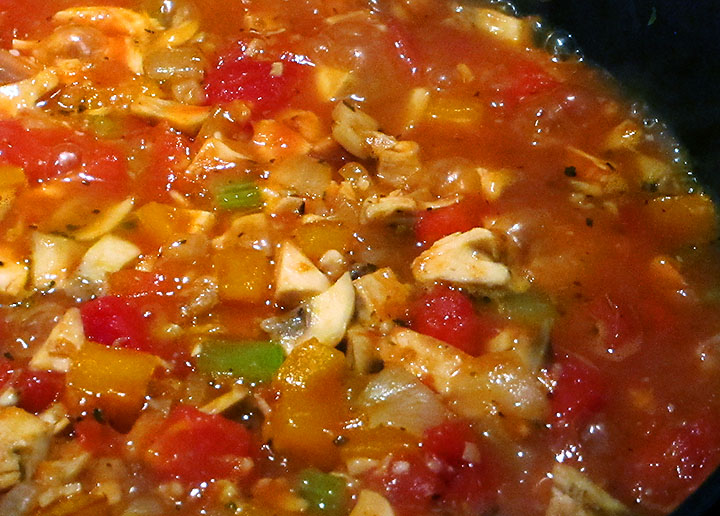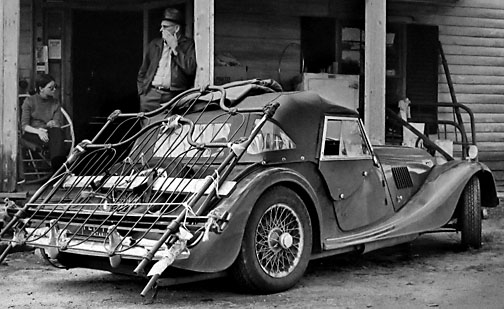In writing the following post, I came upon the paper
How Can We Avoid a Stroke Crisis in Europe? If you do nothing more, read this paper. You found my blog because you were searching for information on anticoagulants, heart rhythm problems and risk of stroke. Read the linked paper. You may find it answers many of your questions.
When done, if you want to know more, read the rest of my post. There are also more links of interest.
Cheers,
Rockinon -- a patient with ongoing heart problems
___________________________________________________________________________
Are anticoagulants underused in Ontario? This is the question I asked myself upon learning that a friend in constant heart flutter was not taking an anticoagulant to lessen his chances of suffering a debilitating stroke.
I found an article in
The American Journal of Medicine looking at this very question. I learned there are clear guidelines for managing atrial fibrillation and atrial flutter with recommendations for anticoagulation based on a patient's overall stroke risk. I also learned that the guidelines are not always being followed.
In a study of more than 170,000 patients in the States, less than 50% of high-risk patients were given anticoagulant therapy. The study concluded that the anticoagulation guidelines are not being routinely followed in clinical practice. The study did not conclude this was resulting in harm to untreated patients but decided another study, one looking at treatment outcomes, was warranted.
I can understand doctors being hesitant to immediately give anticoagulants to all patients with high CHADS
2 scores. Although I am now taking an anticoagulant daily, it was a tough call for my doctors.
I have microbleeding in the brain, discovered during an MRI scan. For a very good discussion of the significance of cerebral microbleeds read the article
Cerebral microbleeds: a new dilemma in stroke medicine posted in the
Journal of the Royal Society of Medicine. In my case, as in all cases, doctors must weight the risks vs. the benefits of various treatments. All too often the answer is a trade-off.
Clearly, a slightly elevated CHADS
2 score is not always enough to convince doctors anticoagulants are the best response. They see the risk/benefit ratio as not favouring the immediate use of a blood thinner (an inaccurate name for anticoagulants.) I don't envy doctors. They find themselves forced to choose between a rock and a hard place every day.
So, should more Ontario patients be on anticoagulants to protect them against stroke? It is hard to say for certain but the answer may well be yes. The Canadian doctors, like their American counterparts, may be too conservative, too timid. In steering their patients down a path that avoids the complications resulting from the use of blood thinners, their patients may be on the road to a stroke.
If you have a heart arrhythmia and are not on a blood thinner, you should ask your doctor why not. There may be good reasons for not giving you anticoagulant therapy but you should know what they are. To get a handle on your risk of a stroke, here is a link to a
CHA2DS2-VASc Score calculator.
To better understand your risk of bleeding, here is a link to a
HAS-BLED calculator. Taken together these two calculators point to the difficult decisions forced upon your doctor.
Lastly, not all abnormal heart rhythms are created equal. All arrhythmias do not result in equal risk of stroke. And atrial flutter, when occurring alone, does not carry the same increased risk of stroke as atrial fibrillation. That said, atrial flutter is often accompanied by periods of atrial fibrillation.
So, should my friend be taking an anticoagulant to lessen his risk of stroke? Maybe. He was on a blood thinner but stopped taking his medication on his own. Possibly his doctor senses his patient's fears and this tips the scales against recommending anticoagulants in the doctor's mind.
But atrial flutter is not benign. It is associated with an increase in overall mortality. According to a posting on
Patient.co.uk, persistent atrial flutter when left untreated can become chronic atrial fibrillation (AF). Even after treatment, I had my atrial flutter eradicated by undergoing an ablation procedure, I continue to take the powerful arrhythmia fighting drug sotalol to help insure my flutter does not return. I also continue to take Pradaxa, a blood thinner, twice a day.
Lastly, I wonder if the perceived dramatic increase in cost of anticoagulant therapy in recent years has influenced doctors, especially in the States. The old drug of choice, coumadin, is relatively inexpensive and safe. Unfortunately, it is also a fair amount of trouble. Regular blood work is necessary to insure the dosage is effective. The bothersome constant need for monitoring is one reason many patients quietly stop taking coumadin without consulting their doctors.
Newer drugs, like Pradaxa (dabigatran), cost more but do not require the expensive regular blood work. Some studies, such as one in Denmark, have found treatment with dabigatran only costs about 10% more than coumadin, with the increased cost of the medication the main driver of the added Pradaxa expense. I take Pradaxa to protect me against stroke while minimizing my chances of suffering a cranial bleed.
Minimizing the occurrence of strokes is a win-win situation. Both patients and society benefit from anticoagulant therapy in high-risk AF populations. A
French study found the mean cost of a severe stroke was €34,809, and the risk of a severe stroke is what accompanies AF. The mean cost of a mild stroke in the study was €10,530. Clearly, dabigatran saves society money by preventing severe strokes in AF patients.
So, why do doctors shy away from prescribing blood thinners when the cost is not exorbitant and the benefits appear to be clear? One study pointed to a misplaced fear of bleeding, especially cranial bleeding. The fear of bleeding seems to trump the fear of stroke among medical professionals.
And so, in seeking treatment for heart rhythm problems there is one risk that is often overlooked: The risk that one's doctor has a personal aversion, an unsubstantiated fear, of the side-effects of the what should be one of the drugs of choice -- an anticoagulant.























